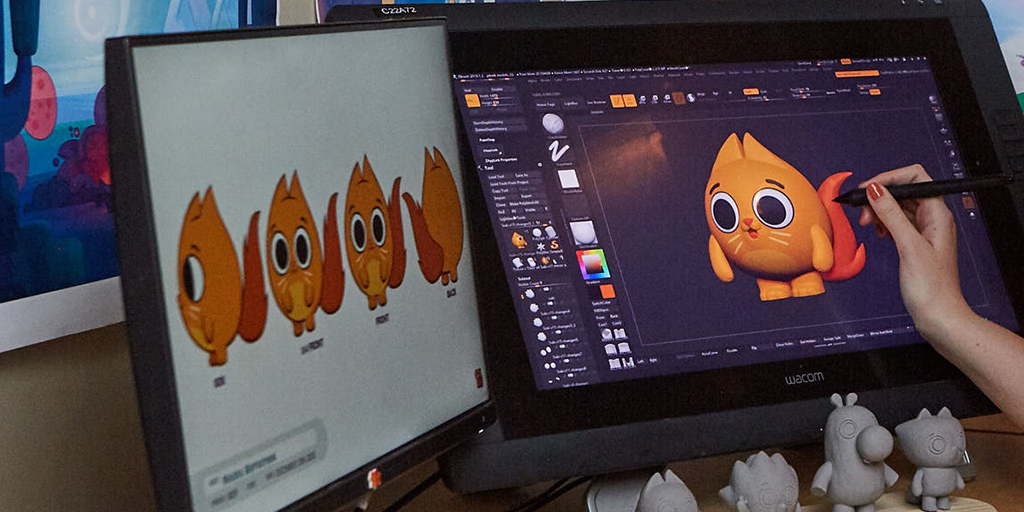Using movement to convey emotion, mood, and character traits
In animation, movement is not just about action—it’s a form of expression. From subtle facial expressions to dynamic gestures, every movement communicates something about a character’s emotions, mood, and personality. For example, a slow, deliberate movement can convey sadness or contemplation, while quick, energetic movements may indicate excitement or enthusiasm. By carefully choreographing movement, animators can evoke a wide range of emotions and bring characters to life in meaningful ways.
The role of sound design and music in enhancing animation
Sound design and music play a crucial role in enhancing the impact of animation. Sound effects add depth and realism to animated scenes, immersing viewers in the world of the story. Whether it’s the creak of a door, the rustle of leaves, or the roar of a crowd, sound effects help to create a rich auditory experience that complements the visual storytelling. Similarly, music sets the tone and mood of a scene, heightening emotions and guiding the audience’s emotional journey. Whether it’s a stirring orchestral score or a catchy pop tune, the right music can elevate animation to new heights, enhancing its emotional impact and resonance.
Visual storytelling techniques in animation
Animation is a powerful medium for visual storytelling, allowing creators to convey complex ideas and narratives through images and motion. Visual storytelling techniques such as composition, framing, and camera movement help to guide the viewer’s attention and convey meaning without the need for dialogue. For example, a close-up shot of a character’s face can convey intense emotion, while a wide shot of a sprawling landscape can establish a sense of scale and grandeur. By mastering these techniques, animators can create compelling stories that resonate with audiences on a deep and emotional level.
Contemporary Trends in Animation
Digital animation techniques and advancements
In recent years, digital animation has revolutionized the animation industry, opening up new possibilities for creativity and innovation. Advances in technology have made it easier than ever for animators to create stunning visuals and intricate animations. From 3D modeling and rigging to advanced rendering techniques, digital animation offers a wealth of tools and techniques for bringing stories to life in ways that were previously unimaginable. With the rise of software platforms like Maya, Blender, and Unity, animators have access to powerful tools that allow them to push the boundaries of their craft and create truly immersive experiences for audiences.
Experimentation and innovation in animation styles
Animation is a medium that thrives on experimentation and innovation, with artists constantly pushing the boundaries of what is possible. From experimental short films to boundary-pushing feature-length animations, there is no shortage of creativity and innovation in the world of animation. Animators are constantly exploring new techniques, styles, and approaches to storytelling, pushing the medium in exciting new directions. Whether it’s experimenting with different art styles, exploring unconventional narrative structures, or pushing the limits of technology, animation is a medium that encourages boldness, creativity, and innovation.
Influences of global animation cultures on the language of animation
Animation is a truly global art form, with artists and storytellers from around the world contributing to its rich and diverse tapestry. From Japanese anime to European animation to Latin American cartoons, each culture brings its own unique perspective and storytelling traditions to the world of animation. These diverse influences enrich the language of animation, offering new insights, perspectives, and approaches to storytelling. By embracing these cultural influences, animators can create work that is both culturally resonant and universally appealing, transcending borders and connecting with audiences around the world.
Impact of Animation on Society and Culture
Influence of animated films and characters on popular culture
Animated films and characters have had a profound impact on popular culture, shaping the way we think, feel, and interact with the world around us. From iconic characters like Mickey Mouse and Bugs Bunny to beloved films like “Toy Story” and “Frozen,” animation has left an indelible mark on the cultural landscape. Animated characters have become cultural icons, beloved by audiences of all ages and cherished for their wit, charm, and enduring appeal. Animated films have also tackled important social and political issues, sparking conversations and inspiring change in the real world.
Role of animation in education, advertising, and entertainment
Animation plays a vital role in education, advertising, and entertainment, serving as a powerful tool for communication and expression. In the classroom, animated videos and interactive lessons can engage students and bring complex concepts to life in ways that are engaging and memorable. In advertising, animated commercials and promotional videos can capture attention and communicate brand messages in a compelling and creative way. And in entertainment, animated films and TV shows provide a source of joy, inspiration, and escape for audiences of all ages, transporting them to fantastical worlds and sparking their imaginations.
Animation as a medium for social commentary and expression
Animation has long been used as a medium for social commentary and expression, allowing creators to tackle complex issues and explore difficult topics in ways that are accessible and engaging. From political satire to social commentary to personal expression, animation offers a platform for artists to share their perspectives and insights with the world. Animated films and TV shows have addressed a wide range of social and political issues, from environmentalism to civil rights to mental health, sparking important conversations and inspiring change. By using animation as a medium for social commentary and expression, artists can engage audiences in meaningful conversations and inspire them to take action on important issues.
Career Opportunities in Animation
Overview of various roles in the animation industry
The animation industry offers a wide range of career opportunities for talented and creative individuals. From animators and storyboard artists to modelers and riggers to directors and producers, there are countless roles to explore and opportunities to pursue. Whether you’re interested in traditional hand-drawn animation, computer-generated imagery, or stop-motion animation, there is a place for you in the world of animation. By exploring different roles and finding your niche, you can build a rewarding and fulfilling career in animation.
Skills and qualifications needed for a career in animation
To succeed in the animation industry, it’s essential to develop a strong foundation of skills and qualifications. These may include artistic talent, technical proficiency, storytelling abilities, and teamwork skills. Whether you’re a natural-born artist or a tech-savvy problem solver, there are opportunities for people of all backgrounds and skill levels to thrive in animation. By honing your craft, expanding your knowledge, and building a diverse portfolio of work, you can position yourself for success in the competitive world of animation.
Tips for aspiring animators to master the language of animation
For aspiring animators, mastering the language of animation is essential for success in the industry. Here are a few tips to help you get started:
-
Study the fundamentals: Take the time to learn the principles of animation, including timing, spacing, and squash and stretch. These principles form the foundation of animation and are essential for creating believable and engaging motion.
-
Practice, practice, practice: Animation is a skill that takes time and dedication to master. Take every opportunity to practice your craft, whether it’s through personal projects, animation exercises, or professional work.
-
Seek feedback: Don’t be afraid to seek feedback on your work from experienced animators and peers. Constructive criticism can help you identify areas for improvement and grow as an artist.
-
Learn from the masters: Study the work of renowned animators and filmmakers to gain insight into their techniques and approaches to animation. Analyze their work, take note of what you admire, and incorporate these elements into your own animations.
-
Be patient and persistent: Animation is a challenging and time-consuming process, but with patience and persistence, you can achieve your goals. Don’t be discouraged by setbacks or obstacles—keep pushing forward and striving to improve with each animation you create.
Conclusion
Animation is a language of movement that communicates stories, emotions, and ideas in unique and powerful ways. By understanding the elements and principles of animation, embracing contemporary trends, and recognizing the impact of animation on society and culture, we can appreciate the artistry and craftsmanship of animation and its significance in our lives. Whether you’re an aspiring animator, a seasoned professional, or simply a fan of animation, we invite you to further explore and appreciate the rich and diverse world of animation.




